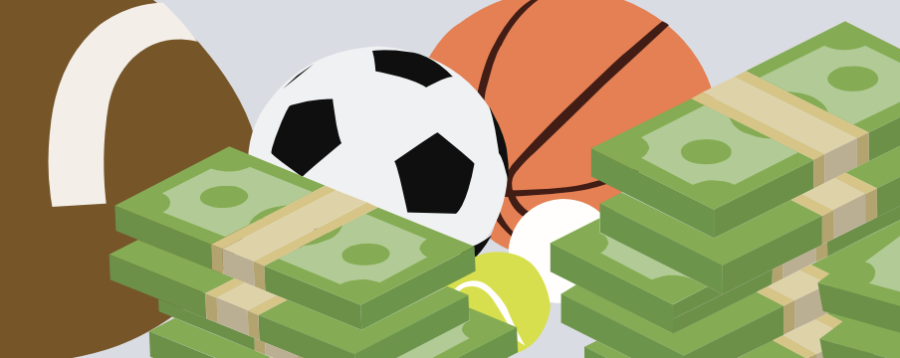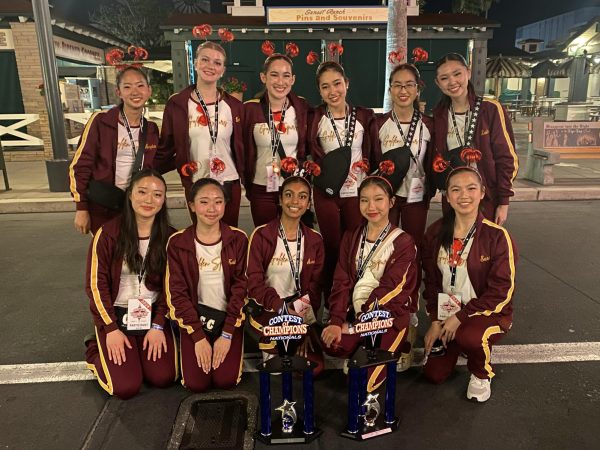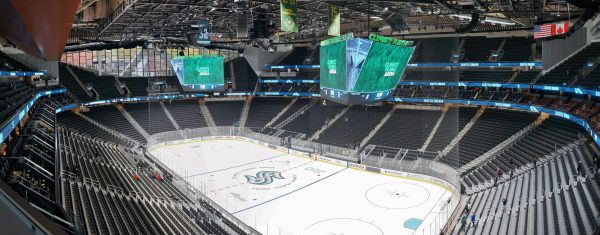The Cost of the Game
Juggling daily practice, school, and home life often comes at a huge expense to the academic and personal lives of student-athletes. However, another largely overlooked aspect is the literal, financial expense of participation in school sports. The costs associated with being a member of a school sports team are not as widely publicized as the glory of winning a game or making finals at a district competition and can often add up to an unexpectedly significant amount. With these considerable fees in mind, many ask the question: how much of it is really necessary?
From a student athlete’s perspective, the answer to this question remains hazy. One school sport in particular that is often referred to when sports fees are discussed is dance. Although known for their outstanding rally performances, sparkling costumes and excellence in national competitions, the CHS Golden Spurs also pay a 300 dollar monthly fee to support these costly aspects of their sport. Additionally, for the most part, it is unclear what exactly these fees are allocated for. Said former Golden Spurs dancer Mariana Martinez Flores, “There was no transparency as to where the three-hundred dollars went.” Despite this, it is important to note that certain sports do cost far more than others. For example, dance is considered an expensive school sport, especially considering that the majority of the cost is covered by the dancers’ families. This is understandable, however, when taking all aspects of the dance team into consideration. On this, Martinez Flores stated, “I don’t know if [the fees] were unnecessary for sure […] but when you do take into account that we were taking buses to Disneyland, we have all of our competition uniforms, costume design and all that, I’d say that it definitely did make sense that we were paying that much. But at the same time, it should be much lower.”
Athletic Director, Scott Stevens, provides his own input on how athletics are funded at Cupertino High School. From the apparent “nonexistence” of athletic boosters in Cupertino High Schools, sports are forced to turn to self-fundraising to create a team fund. When asked about nonessential gear such as team hoodies and new uniforms, Stevens explains how allocating the team fund works in these specific cases. “Anything that’s nonessential for playing the sport is typically paid for by the team itself. So if they’ve had a fundraiser and they have their own ASB account, and they’ve got money there, they can spend it the way that they want to.” In other cases, such as essential items, the athletics department or school pitches in to make sure sports are provided with their gear. Stevens uses this year’s baseball team as an example due to their lack of funds to purchase baseballs, hence nailing the costs on the athletic department itself rather than the team. Another pivotal criterion in deciding how team funds are allocated is the sport itself. “Clearly, the most expensive sport is football.” Stevens reflects on how much gear and how many players make up the CHS Football team and how a higher proportion of funds fall to them outside of self-fundraisers such as Vertical Raise and donations from the teams and boosters. For teams with higher travel costs, such as cheer and the Golden Spurs dance team, a lot of their traveling funds come out of donations, as Martinez Flores uncovered. “Both of those groups [cheer and dance] had some travel involved that was out of town to go to certain events, as well. I think they were just in Florida. So that money that they’re raising is primarily, from my knowledge, from donations.”
Given the high fee prices for certain sports at CHS, it can be easy to label these costs as unnecessary, but it is important to consider every aspect of a sport before coming to a conclusion. Hopefully, in the future, however, Tino sports can see a larger portion of these expenses covered by school funding.
Juggling daily practice, school and home life often comes at a huge expense to the academic and personal lives of student-athletes. However, another largely overlooked aspect is the literal, financial expense of participation in school sports. The costs associated with being a member of a school sports team are not as widely publicized as the glory of winning a game or making finals at a district competition and can often add up to an unexpectedly significant amount. With these considerable fees in mind, many ask the question: how much of it is really necessary?
From a student athlete’s perspective, the answer to this question remains hazy. One school sport in particular that is often referred to when sports fees are discussed is dance. Although known for their outstanding rally performances, sparkling costumes and excellence in national competitions, the CHS Golden Spurs also pay a 300 dollar monthly fee to support these costly aspects of their sport. Additionally, for the most part, it is unclear what exactly these fees are allocated for. Said former Golden Spurs dancer Mariana Martinez Flores, “There was no transparency as to where the three-hundred dollars went.” Despite this, it is important to note that certain sports do cost far more than others. For example, dance is considered a very expensive school sport, especially considering that the majority of the cost is covered by the dancers’ families. This is understandable, however, when taking all aspects of the dance team into consideration. On this, Martinez Flores stated, “I don’t know if [the fees] were unnecessary for sure […] but when you do take into account that we were taking buses to Disneyland, we have all of our competition uniforms, costume design and all that, I’d say that it definitely did make sense that we were paying that much. But at the same time, it should be much lower.”
Athletic Director, Scott Stevens, provides his own input on how athletics are funded in Cupertino High School. From the apparent “non-existence” of the athletic boosters in Cupertino High Schools, sports are forced to turn to self-fundraising to create a team fund. When asked about non-essential gear such as team hoodies and new uniforms, Stevens explains how allocating the team fund works in these specific cases. “Anything that’s non-essential for playing the sport is typically paid for by the team itself. So if they’ve had a fundraiser and they have their own ASB account, and they’ve got money there, they can spend it the way that they want to.” In other cases, such as essential items, the athletics department or school pitches in to make sure sports are provided with their gear. Stevens uses this year’s baseball team as an example due to their lack of funds to purchase baseballs, hence nailing the costs on the athletic department itself rather than the team. Another pivotal criterion in deciding how team funds are allocated is the sport itself. “Clearly, the most expensive sport is football.” Stevens reflects on how much gear and how many players make up the CHS Football team and how a higher proportion of funds fall to them outside of self-fundraisers such as Vertical Raise and donations from the teams and boosters. For teams with higher travel costs, such as cheer and the Golden Spurs dance team, a lot of their traveling funds come out of donations, as Martinez Flores uncovered. “Both of those groups [cheer and dance] had some travel involved that was out of town to go to certain events, as well. I think they were just in Florida. So that money that they’re raising is primarily, from my knowledge, from donations.”
Given the high fee prices for certain sports at CHS, it can be easy to label these costs as unnecessary, but it is important to consider every aspect of a sport before coming to a conclusion. Hopefully, in the future, however, Tino ports can see a larger portion of these expenses covered by school funding.

Rishita is a senior who claims to be 6'3'' and has never read a book in her life. She has been on the CHS softball, basketball, soccer, cheer, and field...
















